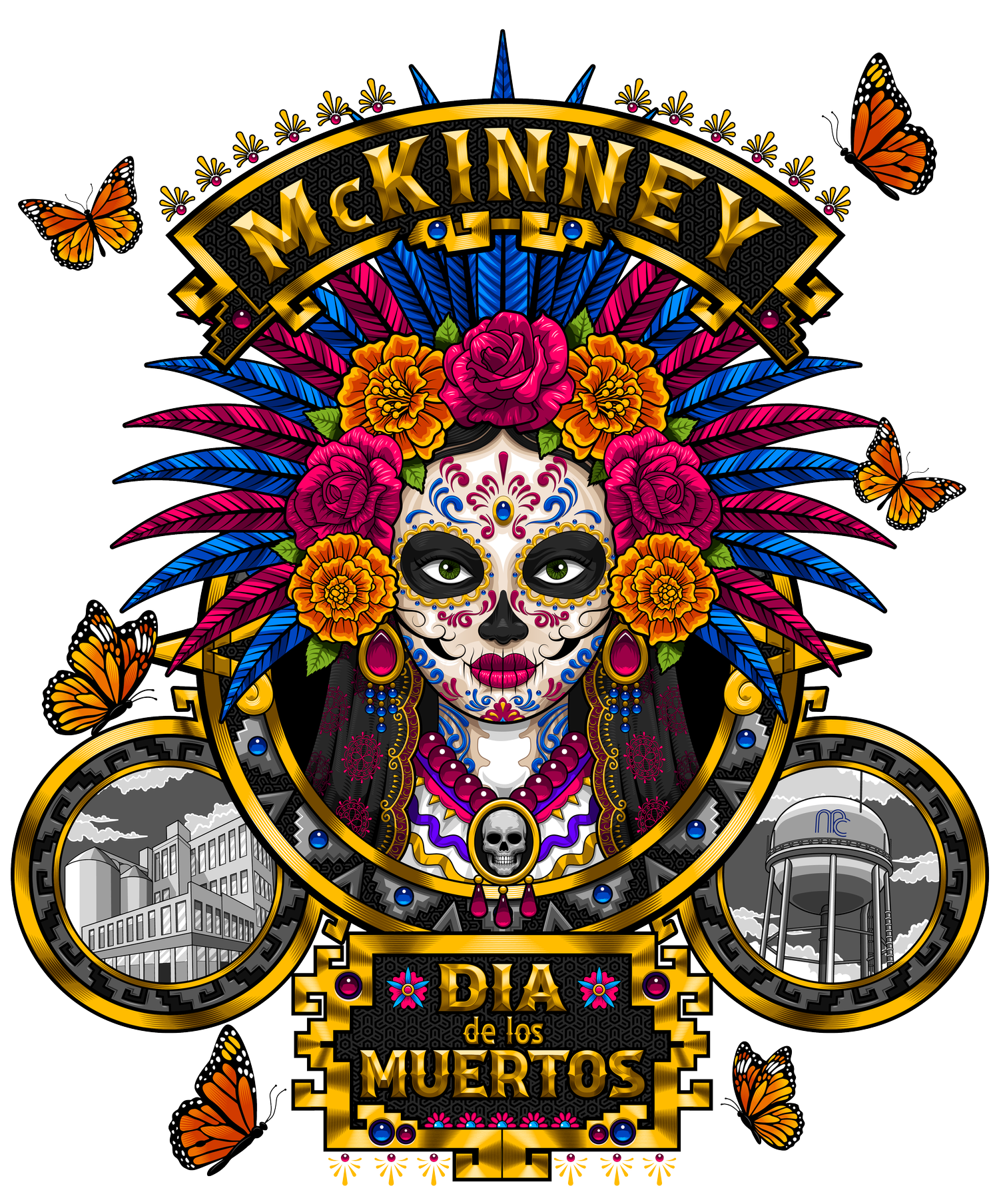What is Día de los Muertos?
Día de los Muertos is a Latin American custom celebrating the lives of the deceased with food, drink, parties, and activities the dead enjoyed in life. It recognizes death as a natural part of the human experience, beginning with birth, childhood, and growing up to become a contributing member of the community. On Día de los Muertos, the dead are also a part of the community, awakened from their eternal sleep to share celebrations with their loved ones.
Many people make altars or “ofrendas” (offerings) in their homes to honor their loved ones who have died. Every ofrenda also includes the four elements: water, wind, earth and fire. However, the most familiar symbol of Día de los Muertos may be the Calacas and Calaveras (skeletons and skulls), which appear everywhere during the holiday:in candied sweets, as parade masks, as dolls. Calacas and Calaveras are almost always portrayed as enjoying life, often in fancy clothes and entertaining situations. Today, La Catrina is the most recognizable image of the Día de los Muertos. She has come to symbolize a willingness to laugh at death and a reminder that we are all equal in the end.
La Catrina
Today, La Catrina is the most recognizable image of the Día de los Muertos. She has come to symbolize a willingness to laugh at death and a reminder that we are all equal in the end.
Ofrendas
A special altar, or ofrenda, is prepared for those who have passed away. It usually includes pictures, candles, food and drinks. This altar is created with the intention of inviting the dead to come home for some hours and enjoy all the surprises created for them.
Marigolds
It is believed the color and fragrance of the marigolds (cempasuchitl) leads the spirits to the home. Sometimes paths made from petals lead the spirits from the cemetery to the house of the living.
Monarch Butterflies
For people in the state of Michoacán and the State of Mexico, monarchs hold a special place in their traditions. Monarchs represent the souls of their ancestors returning to visit them for Día de Muertos. This belief comes from the Purépecha, as well as the Mazahua, two indigenous peoples of the area (Fernandez, 2017; National Geographic en Español, 2018). The Purépecha have tracked the monarch’s return to Mexico for centuries. The arrival of the butterfly, known as la parakata in Purépecha, meant that it was time for the corn harvest. The parakatas were also believed to be the souls of the dead visiting for the night of Día de Muertos (Lewis, 2019). The swaths of captivating monarchs flying overhead have continued to be an important connection between the living and the dead.
Monarch butterflies enter Texas in early September, following the route along I35 from Wichita Falls to Eagle Pass. One group of butterflies also flies along the Gulf Coast of Texas on their way to Sierra Madre Range in Central Mexico. The migration is usually over by the end of October. In late March, the butterflies are back in Texas as they return north to breed. We have our own Monarchs of McKinney, which you can check out more info about them here.
Papel Picado
The perforated paper has different meanings according to the color. Orange paper represents mourning; purple paper represents the Catholic religion; red paper represents warriors and women who died while giving birth; green paper represents the young; yellow paper is for elderly; white paper is for children, and black paper represents the underworld. They are light in weight and can signal the arrival of the dead by their movement.
Sugar Skulls
A common symbol of the celebration are the skulls (calaveras), which are usually made from chocolate or sugar. People label the front sections of the skulls with the names of the living, but never with the names of the deceased. These sugar skulls are also used as a small gift for coworkers or friends during Day of the Dead festivities.
Calacas
Skeletons/Hand crafted skeletons - These figures are funny rather than terrifying. Some of them may represent the occupations and hobbies of the dead. Additionally, people place child toys, guitars, special drinks, tortillas or ornaments related to the beloved dead.







